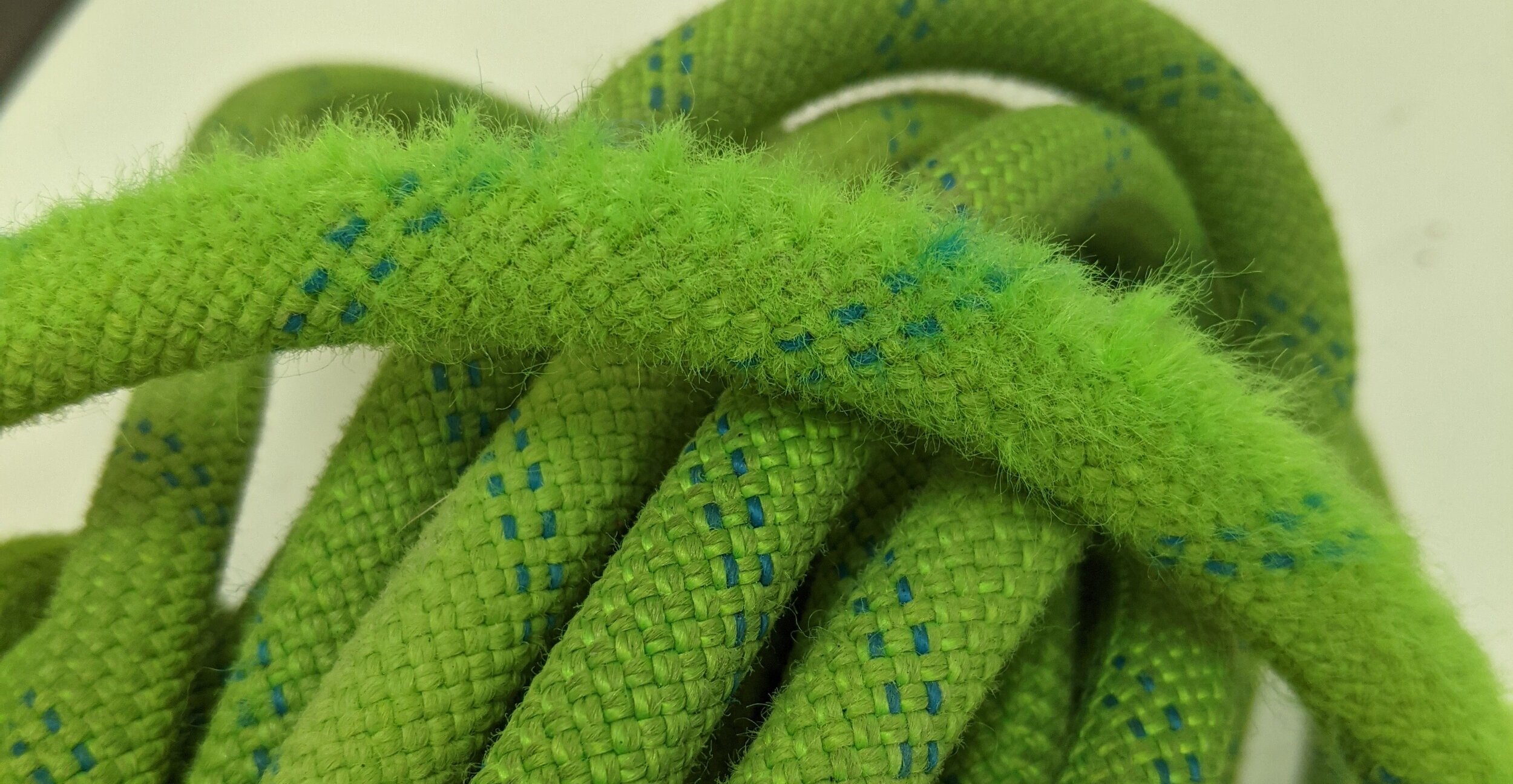How To Cut Your Rope: The Better Beta
Noticing heavy wear, soft spots, or even a core shot section near the end of your rope? It may be time to cut a few meters off each end. Climbing ropes used mostly for lead tend to wear heavily at the ends, while the middle has seen much less abrasion and load. Cutting the ends off and shortening the rope might let you get more mileage out of it. Turn your 70 m rope into a cleaner 60 m rope, or your 60 m rope into a gym rope to save some money. Whatever the reason, we’ll show you how in the steps below.
Disclaimer: Flames and knives/blades can cause serious injury with improper use. Fumes from melting Nylon pose a health risk if inhaled. Always use caution when operating a lighter or using a blade, and never heat or melt nylon with proper ventilation. If you are going to cut your rope, make sure you are aware of its new, shorter length, and whether or not the middle marker is accurate. Bringing a short rope to a long crag can be lethal, especially if you haven’t developed good habits with knotting your ends.
The advice below comes with no warranty of safety and is to be used at your own risk. As always, you are responsible for your own safety.
Step 1: Melt The Sheath
Using a lighter, melt the sheath (the outer wrapping of the rope/cord) around the area you are going to cut. Make sure to keep the flame moving, and don’t overcook it! An area around 1 inch wide will suffice. This will fuse and harden the sheath so it doesn’t fray when you cut it.
A nicely melted sheath ready for cutting.
Step 2: Cut The Cord
Cut the rope in the middle of the heat affected area. The sharper and thinner the blade the better; a fresh razor blade is ideal. Once you have cut through, you should have nice clean cut ends, but you’re not done yet!
The rope end, post cut. Notice how the melted sheath doesn't fray, and acts to keep the core tight.
This is what it looks like if you cut the rope without melting the sheath. Not ideal, and it gets worse when you try to melt it.
Step 3: Clean Up The Ends
Once you’ve cut the rope, some final cleanup is required so it won’t fray in the future. Melt the cut end further, melting the exposed core fibers and sheath fibers together. Again keep the flame moving. If your rope catches fire, bubbles, or turns black, you've overcooked it.
The final product — a well dressed rope end. No fraying, no expanded end, no nylon drippings protruding out. Clean and ready for use!





